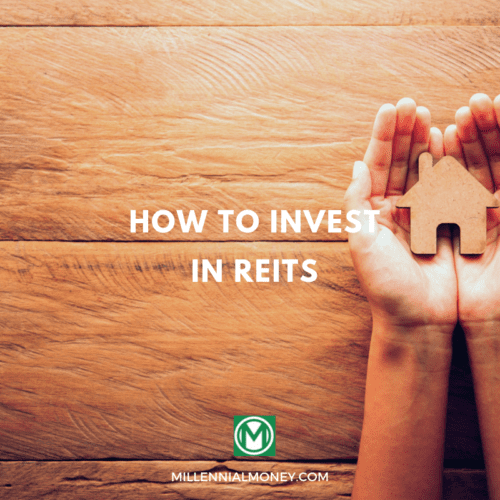You may be happy if your investment statements show steady gains from year to year. But does that mean you’re getting a good rate of return? And for that matter, what is a good rate of return?
As it turns out, an investment isn’t a good one simply because it rises in value. It’s only good if it outperforms similar investments, or at least outpaces inflation.
To know if an investment is doing either, you’ll need to know how to calculate the rate of return. So, let’s dive into this all-important topic.
What Is Rate of Return?
When you invest, you expect to earn more money on that investment. Though the return comes to you in dollars, the rate of return itself is measured by percentage.
Let’s start with a relatively official rate of return definition from Investopedia:
“A rate of return (RoR) is the net gain or loss on an investment over a specified time period, expressed as a percentage of the investments initial cost. Gains on investments are defined as income received plus any capital gains realized on the sale of the investment.”
Does that sound a little too complicated? Let’s break it down into dollars and percentages.
How to Calculate Rate of Return
Here is the formula for calculating Rate of Return:
100% x (New Value of Investment - Initial Value of Investment) / Initial Value of Investment
For example, let’s say you have a stock that you purchase for $100. After one year, the stock has risen in value to $110. It’s also paid a $2 dividend in that year.
In dollar terms, the combined return is $12. But in percentage terms, the return is 12% – ($10 in capital appreciation + $2 in dividends) divided by the $100 original purchase price.
It’s important to understand that the rate of return on an investment can also be negative.
Taking the same stock from the example above, let’s say that rather than rising in value to $110 after one year, instead, the price drops to $90. When factoring in the $2 dividend paid during the year, you have a net loss of $8 on the investment. Since you purchased the stock for $100 at the beginning of the year, your rate of return will be a net loss of -8%.
Different Investments Have Different Rates of Return
Every investment has a rate of return, or at least it should. With certain investments, like certificates of deposit and short-term US Treasury securities, the return is very specific. That’s because you’ll be earning a definite interest rate on the security. Returns are also easy to calculate.
For example, if you purchase a 12-month CD paying 1.75% interest, the return on that security is 1.75%. Because the value of the certificate neither rises nor falls, interest is the only measure of its rate of return.
Some investments don’t pay a regular rate of return, like interest or dividends. The return is measured strictly in terms of changes in the value of the investment. Good examples are gold bullion or non-dividend paying growth stocks. Since neither pays interest or dividends, the rate of return for each is limited strictly to changes in value.
If the stock or gold bullion rises by 20% in one year, the rate of return is 20% for that year. The problem, of course, is that a rate of return is based strictly on changes in asset value that are unpredictable. The same investment that rises by 20% one year can fall by 30% the next.
The only way to measure the rate of return on such investments is in hindsight. Since the asset can’t be expected to produce positive cash flow, its rate of return can only be projected, but never guaranteed.
What Is A Hybrid RoR?
Dividend-paying stocks are an example of an investment with a hybrid rate of return. Since they pay dividends, there’s a definite rate of return from that source. But since the value of the stock itself can change in value – higher or lower – the future rate of return is only slightly less speculative than that of a non-dividend paying stock.
The stock may yield a 3% dividend, but it’s the ultimate rate of return at the end of one, five, or ten years will be determined by its capital appreciation or loss during the specified timeframe.
Rate of Return Is Based on Specific Time Intervals
The exact rate of return on any investment depends heavily on the timeframe being considered.
In most cases, the rate of return is calculated on an annual basis.
Compound Returns
Compound returns – the rate of return on investment over several years – is much more important to long-term investors.
For example, if you purchased a stock for $100 five years ago, and today it’s worth $200, the stock has experienced a 100% gain. But broken down over five years, the annual returns are roughly 15%.
If that stock also paid a $2 annual dividend, the compound annual rate of return over five years will be 17%. That’s made up of a 2% annual dividend on the original purchase price of the stock, plus the 15% average annual capital gain.
With interest rates and dividend payouts being at historically low levels over the past decade, many investors have focused primarily on the rate of return from capital appreciation. For example, a stock that doubles in value every five years has a better rate of return than a fixed income security paying 2% per year.
What is a Good Rate of Return?
This is the eternal question for all investors, and precisely what constitutes a good rate of return depends on the investment you’re making.
Overall, an investment should be expected to produce a rate of return that at least exceeds the rate of inflation. The inflation rate has averaged about 2% per year over the past decade. So, you’ll have to earn at least 2% on an investment for it to maintain its real value in terms of purchasing power.
If you invest in a bond that pays 4% annual interest, you’ll have a real rate of return of +2%. The real rate of return is the return on the investment, less the rate of inflation over the period of time in question.
Comparing Rates of Return
But while inflation may be the minimum return you should receive, other measures are much more popular.
When it comes to stocks, it’s popular to compare the rate of return on an individual stock with an underlying index. The most common one is the S&P 500 index. A stock or fund is generally considered to have a good rate of return if it has at least matched that index, and even more so if it exceeded it.
Long-term, the S&P 500 index has produced annual returns of about 10%.
What is a Bad Rate of Return?
We know that a rate of return is considered good when it at least matches inflation (in the case of fixed-income investments) or exceeds it. And we also know that a stock or a fund is a good investment when it equals or exceeds the rate of return on a correlated index for its industry, or a general index, like the S&P 500.
A bad rate of return then is when a fixed income investment returns less than the rate of inflation, or a stock or fund underperforms its corresponding index. But in either case, the investment can still turn a positive return but is considered to have a bad rate of return nonetheless.
For example, the current average rate of return on a 12-month certificate of deposit is 0.49%. If you were to invest in a CD paying that rate, you would experience a real rate of return of -1.51%. That’s because the interest rate being paid on the CD isn’t even allowing your investment to keep up with inflation. Yes, the value of the CD will increase by 0.49% at the end of one year. But the purchasing power of the funds invested will decline by more than one and a half percentage points in real terms.
Underperforming Investments
And if a stock or fund turns in a lower rate of return than the S&P 500 index, it’s considered to have underperformed the market. For example, if the S&P 500 rises by 13% for the year, and a stock you’re holding rises by 10%, it’s a bad rate of return.
Now, most investors would consider a 10% rate of return on a stock to be positive. And it certainly is in the sense that you easily outperformed inflation and grown your position in real terms. But the fact that it underperformed the index means there were better investments to be had.
The High Reward/High Risk Factor
This is a factor that’s a bit of an outlier when it comes to determining rate of return. The person who invests in a high reward/high risk investment isn’t looking to earn ordinary returns. Beating inflation or a stock index isn’t the goal. The investor is looking to reap an unusually large gain. To get that gain, he or she is willing to accept the risk that the investment could either underperform the market or even lose money.
So why would somebody choose such an investment, if safer options are available? – Mainly because of the expectation of making a lot more money than the average investor.
While many investors may be content to plod along and earn 10% on stocks and 2% on fixed-income investments, the high reward/high risk investor is looking for something much greater.
High Yield Investments Come with Greater Risk
For example, you may invest in stocks of companies with depressed share prices, in the hope of a big run-up in stock value when the companies turn around. You may also look for companies likely to be takeover targets.
All such investments are speculations because they depend on future events that are not guaranteed or even likely happen. But it is possible to develop skills in identifying stocks likely to outperform the market.
Similarly, a fixed-income investor may choose to invest in high-yield corporate bonds to earn higher interest. So, while super-safe, AAA bonds may pay 3%, she may choose high-yield bonds paying 5%.
Now the reason high-yield bonds pay higher yields is that they’re rated as companies more likely to default on those bond issues. That’s why they used to be called “junk bonds.” The high reward/high risk investor is aware of that risk, but she chooses to invest in the bonds, believing default be unlikely.
Learn More:
How Do You Find the Rate of Return of an Investment?
Fortunately, it’s easy to find the rate of return on stocks on major financial news platforms. For example, let’s say you want to know what the performance of Apple has been over the past year. You can go to a popular financial site, like MarketWatch, and get that exact information.
It’s even easier with mutual funds and exchange traded funds (ETFs) because they typically give the performance of funds for the past three, five, and ten years, as well as the past year.
An example is the Fidelity Contrafund, one of the largest actively managed mutual funds in the world. The information is readily available on the fund summary page, and is shown in the screenshot below:
At first glance, you might focus on the one-year rate of return for the fund and determine it has a bad rate of return. But if you look at the three longer-term performances, it’s consistently outperformed the S&P 500.
It needs to be said, however, that when it comes to stocks and funds, past performance is never a guarantee of future returns. But if you’re a long-term investor – and that’s precisely what you should be if you want to build wealth – the long-term performance is mostly what you’re looking for.
Rate of Return Isn’t The Only Factor to Consider
At this point you may be wondering to yourself: if stocks so heavily outperform fixed income investments, why not invest only in stocks and take advantage of the much higher returns?
As it turns out, rate of return isn’t the only factor when it comes to investing. Proper diversification also matters. A well-balanced portfolio should have growth assets, like stocks, as well as fixed-income investments to provide safety.
Sure, it’s great to be 100% in stocks when the market is rising. But it can be a complete disaster when the market is falling. A 20% allocation in fixed income investments will reduce the losses on your stock position by 20%. In addition, it will also give you the all-important cash trough to draw from to buy stocks when the decline comes to an end.
It’s the risk-versus-reward analogy – stocks have higher returns, but they also have greater risk. Fixed income investments have lower returns, but they also have lower risk. They may even have zero risk.
As long as the fixed income investments are at least keeping up with inflation, and maintaining a stable value, they’re doing exactly what you want them to do in your portfolio.






No comments yet. Add your own